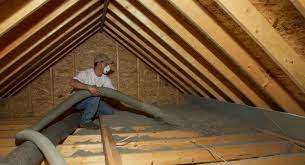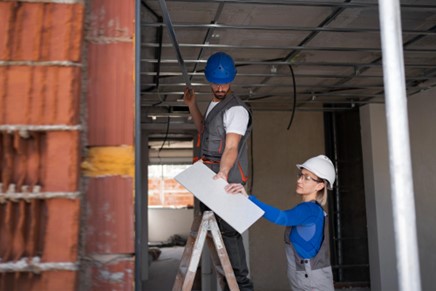Creating a Seamless Transition with Paver Edging and Borders
Attention to detail can make or break a landscaping or hardscaping project. Paver edging and borders are often overlooked when it comes to creating beautiful and functional outdoor spaces, but they can have a significant impact. These subtle but important features can completely transform your outdoor space by adding structure, defining spaces, and ensuring a smooth transition between different elements. We will look at the art and science of using paver edging and borders to create a cohesive and visually appealing outdoor environment in this blog.
Paver Edging and Borders Are Important
Paver edging and borders are useful in a variety of landscaping and hardscaping projects. They serve as functional elements while also improving the appearance of your outdoor space. Here are some of the main reasons for their significance:
1. Structural Integrity: Paver edging and borders help to keep your paved surfaces structurally sound. They keep the pavers from shifting or spreading apart over time, which is especially important in high-traffic areas or areas with freeze-thaw cycles.
2. Space Delineation: Edging and borders allow you to define specific areas within your outdoor space. You can use them to separate a patio from a lawn, create a distinct pathway, or encircle a garden bed, for example. This delineation not only looks nice, but it also helps keep the various elements organized.
3. Erosion Prevention: Where soil erosion is a concern, paver edging and borders can act as barriers to keep soil in place. This is especially important in areas with a lot of rain or sloping terrain.
4. Enhancement of Aesthetics: Edging and borders are available in a variety of materials, shapes, and colors, allowing you to add a decorative touch to your landscape design. They can enhance your overall theme, connect disparate elements, and make your outdoor space more visually appealing.
5. Safety: Raised borders can also provide a physical barrier between paved areas and adjacent softer surfaces such as grass or flower beds. This can help to avoid tripping and establish a clear boundary.
Now that we know why paver edging and borders are important, let’s look at how to use them to create a smooth transition in your outdoor space.
Selecting the Best Materials
Choosing the right materials for paver edging and borders is the first step in creating a seamless transition. Your design preferences, the overall style of your landscape, and the specific function of the edging and borders will all influence your material selection. Here are some popular alternatives:
1. Brick: Brick edging and borders provide a timeless and classic appearance. They can be used to enhance both traditional and modern landscapes. Brick is long-lasting and can withstand the elements.
2. Concrete: Concrete pavers are versatile and come in a variety of shapes and colors. They can have a natural stone look or a more modern appearance. Concrete is a low-cost option that is both durable and low-maintenance.
Natural stone, such as limestone, granite, or slate, adds a touch of elegance to your landscape. It is a high-end option that complements formal gardens and upscale outdoor spaces.
4. Wooden borders: Timber or wooden borders have a rustic and organic feel to them. They’re great for defining garden beds or creating a laid-back atmosphere.
5. Metal: Metal edging, usually made of steel or aluminum, has a sleek and modern appearance. It is frequently used in modern designs and is particularly effective for delineating pathways.
6. Plastic: Plastic paver edging is a low-cost, easy-to-install option. It is commonly used for basic landscaping requirements and comes in a variety of designs and colors.
The material you use should be appropriate for your project’s goals, budget, and overall aesthetic.
Creating Borders and Edging with Paver
After you’ve chosen the right materials, you’ll need to design your outdoor space with paver edging and borders. Here are some design ideas to help you make a smooth transition:
1. Plan Ahead: Begin with a clear plan for your outdoor space. Determine where you want paver edging and borders to go and what purpose they will serve. This could include defining areas for outdoor seating, flower beds, and pathways.
2. Consistent Width: Keep your edging and borders the same width throughout your landscape. This contributes to a more cohesive appearance and ensures a smooth transition from one area to another.
3. Curved or Straight: Consider whether you want your borders to be curved or straight. Curved borders can give your landscape a soft and organic feel, whereas straight lines convey a more formal and structured appearance.
4. Height Variation: Experiment with different border heights. Taller borders can be used as seating walls or raised planters, whereas shorter ones are mostly used to define edges. Using different heights can add visual interest.
5. Material Combinations: If your design calls for it, don’t be afraid to mix materials. Brick, for example, can be used for a pathway and natural stone for flower bed borders. Just make sure the materials complement one another.
6. Layering: Layering is a technique that creates depth by using multiple rows of paver edging or borders. This is especially useful for framing large garden beds or creating intricate patterns.
Installation and Maintenance
The longevity and effectiveness of your paver edging and borders are dependent on proper installation and maintenance. Here are some key considerations:
1. Level and Secure: Make sure the edging and borders are level and securely anchored into the ground. This helps to keep them from shifting or tilting over time.
2. Drainage: Allow for proper drainage by installing edging and borders that are slightly higher than the surrounding grade. This keeps water from accumulating against paved surfaces.
3. Weed Control: To prevent weeds from growing between the pavers, use landscaping fabric or a weed barrier under the borders. Check for weed growth on a regular basis and deal with it.
4. Maintenance: Routine maintenance entails cleaning the pavers, inspecting for damage or shifts, and replacing any damaged edging or borders as soon as possible. Proper maintenance ensures that your outdoor space remains in pristine condition. For durable and reliable paver installation, consult with experienced professionals who can ensure the longevity and effectiveness of your outdoor paving project.
Putting It All Together
Paver edging and borders may appear to be minor details in your outdoor design, but they are crucial in creating a cohesive and visually appealing landscape. They give your outdoor space structure, definition, and a sense of completion. Don’t underestimate the impact that well-chosen and thoughtfully placed edging and borders can have when designing a welcoming patio, a functional pathway, or a stunning garden. Paying attention to these details will ensure that your outdoor space is not only beautiful, but also functional and long-lasting. To explore options and tips for incorporating paver edging and borders into your outdoor design, find more here and make the most of your landscaping project.







